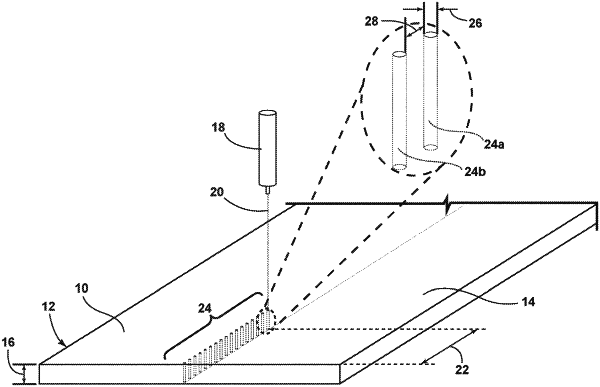| CPC B23K 26/0006 (2013.01) [B23K 26/32 (2013.01); C03B 33/0222 (2013.01); C03C 23/0025 (2013.01); C03C 27/08 (2013.01)] | 15 Claims |

|
1. A method of separating a portion of an object comprising a first layer that is transparent to a wavelength of a laser emission, a second layer that is not transparent to the wavelength of the laser emission, and a third layer that is transparent to the wavelength of the laser emission, the method comprising:
bonding the first layer to the third layer throughout a bonded volume, whereby the bonded volume is transparent to the wavelength of the laser emission;
perforating at least a portion of a thickness of the object sequentially over a length using the laser emission at the wavelength to form a series of perforations between a first portion of the object on one side of the series of perforations and a second portion of the object on the other side of the series of perforations, the series of perforations extending through the bonded volume; and
applying a stress to the object at the series of perforations to separate the first portion of the object from the second portion of the object;
wherein the thickness of the object, at the series of perforations, is transparent to the wavelength of the laser emission; and
wherein the bonding the first layer to the third layer throughout the bonded volume comprises diffusing at least a portion of the second layer into the first layer and into the third layer to form the bonded volume, wherein diffusing the second layer into the first layer and into the third layer renders the bonded volume transparent to the wavelength of the laser emission.
|